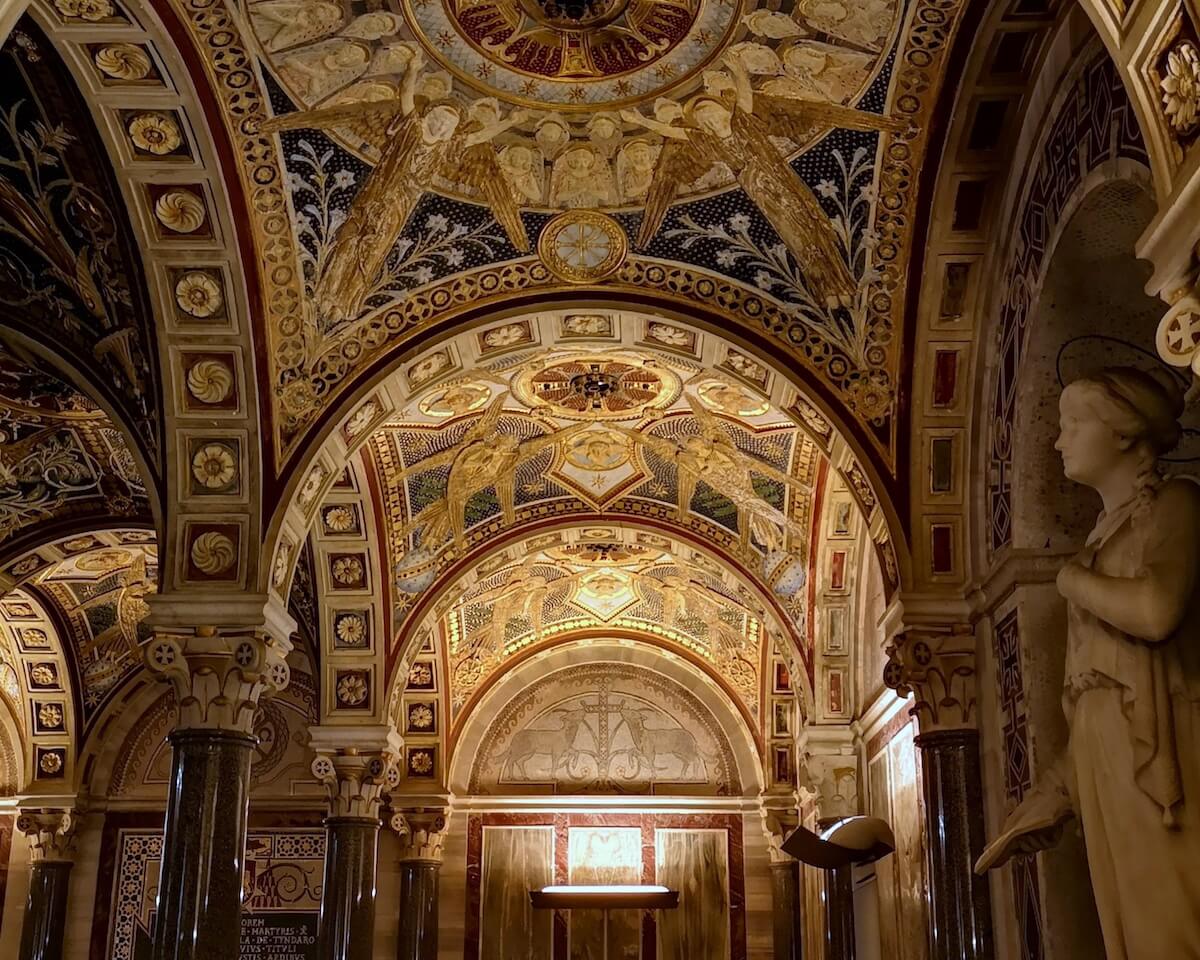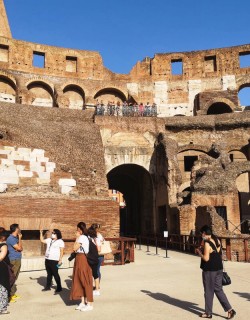In Rome, history piles up and is compacted like so many sedimentary layers of rock. With a continuous story of habitation dating back over 2,700 years, the city has pretty much seen it all. But while many monuments to the city's many pasts, from the ruins of ancient Roman landmarks to dusty medieval churches and opulent Renaissance palaces, are still plainly visible in Rome's urban topography, many more are concealed deep beneath the street level of the modern metropolis.
A dizzying array of crypts, churches and temples, of houses, villas, shops, apartment buildings, bathhouses and any other type of building you care to mention have been buried by the passage of time, walled up, built over or abandoned as the city inexorably changed over the centuries. Many of them are extraordinarily well preserved in their homes below ground, and visiting them feels quite literally like stepping back in time. Here are seven of our favorite underground sites you can visit in Rome!
The Subterranean Church and Temple of San Clemente

The beautiful church of San Clemente conceals a fascinating secret: beneath the magnificent 12th century basilica, which is a treasure trove of glittering medieval mosaics, Renaissance frescoes and lovely architecture, a perfectly preserved older church lies hidden underground. This, it turns out, was the original house of worship dedicated to Saint Clement, built way back in the 4th century AD. But what happened? Well, after the devastating Sack of Rome wrought by Norman invaders in 1084 reduced the church to a fragmentary shell, Pope Paschal II decided to start over. Instead of going to the effort of knocking the old building down, however, he simply filled it up with dirt and rubble and built over the top.
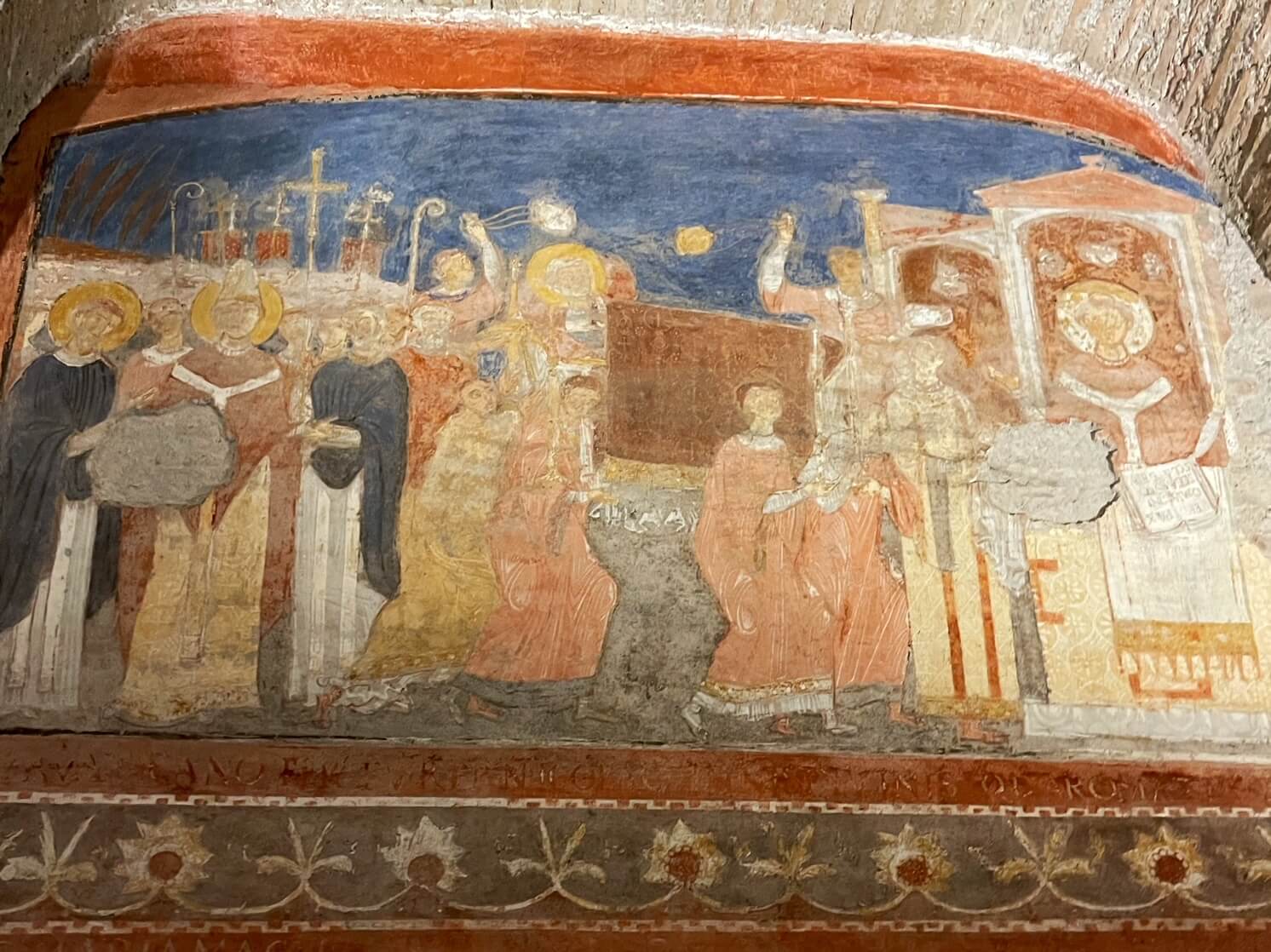
Paschal's novel approach meant that the structure of the early-Christian basilica was preserved deep below ground, as were the fabulous decorations that adorned it. The old church was only discovered in the 19th century by an enterprising Irish monk friar, and the Dominican monks who live in the adjoining monastery spent decades excavating the amazing find.
Entering into the abandoned church today is a surreal experience: the roomy nave and side aisles are covered by highly expressive paintings depicting scenes from the life of Saint Clement himself, including one in which the characters are pictured speaking in the Italian vernacular via the device of comic-book style speech bubbles.
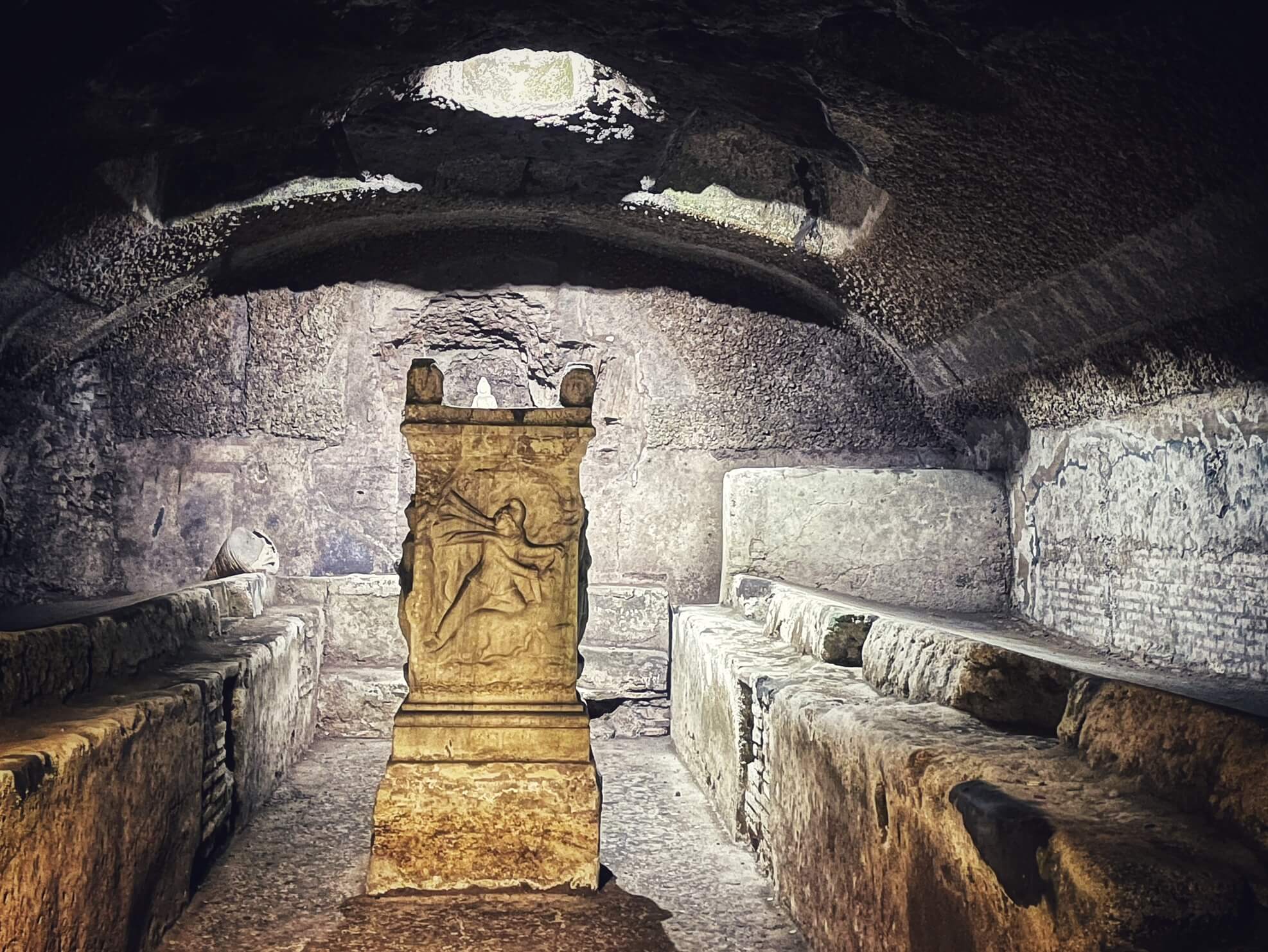
The underground curiosities of San Clemente don't end there, either. Descend still further into the sediments of lost Roman time and you'll emerge into an ancient Mithraic temple, which is even older than the early-Christian basilica. Mithraism was a very popular religion in ancient Rome, primarily the preservation of military men; their rituals involved the slaughtering of a bull in honor of the mythical Mithras, and on the cult-room's altar you can see an ancient sculpture depicting Mithras engaged in just such a bloody deed.
The Roman Houses of Celio
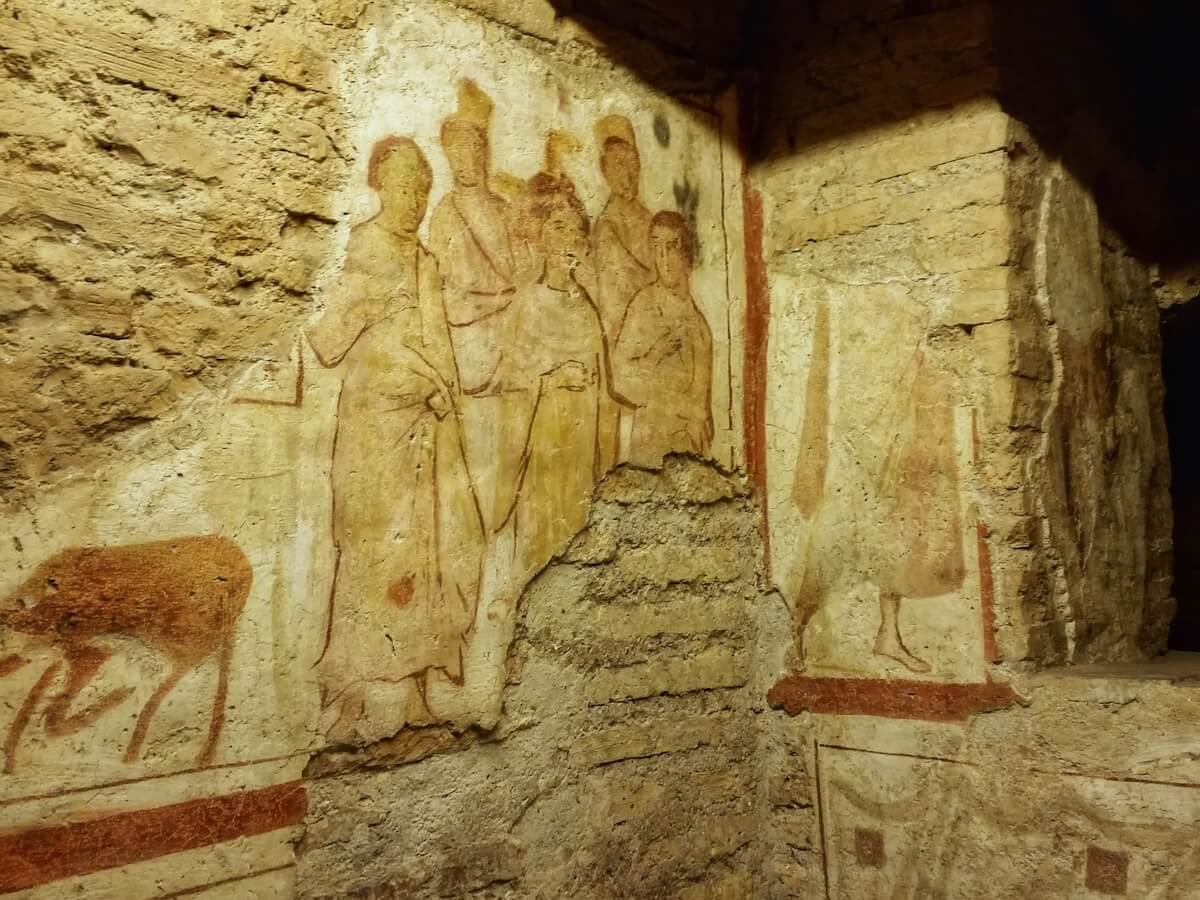
As with San Clemente, we owe the discovery of an extraordinary ancient archaeological site concealed beneath the medieval basilica of Santi Giovanni e Paolo to the intrepid detective work of a 19th-century priest. This time our religious enterprising was one Father Germano Ruoppolo, who was seeking evidence of the lives and martyrdoms of the titular saints on the grounds of the church.
What he found was actually far more impressive: the extensive remains of Roman dwellings dating from the 2nd and 3rd centuries AD. The houses are brilliantly preserved, and provide incredible first-hand insight into the daily life of ancient Romans. It's been hypothesised that the complex, which extends over more than 20 rooms, began life as a split-level domus , or private house, which had its own private thermal baths, before being transformed into an insula - a multi-purpose building that would have comprised ground floor shops and warehouses with working-class apartments on the upper story.

Some time in the 3rd century the complex was unified into a luxurious super villa, with colorful and elegant frescoes decorating its walls. The fascinating murals vividly demonstrate the transition from pagan worship to Christianity that was occurring in these very years in Rome - stunning paintings depicting pagan deities and genii - Roman guardian angels that watched over people and places - sit serenely side-by-side with Christian images representing the martyrdom of saints John and Paul.
The Crypt of Santa Cecilia in Trastevere
With its magnificent frescoes by Pietro Cavallini and Stefano Maderno's iconic sculpture depicting Saint Cecilia, patron saint of music, Santa Cecilia in Trastevere is one of the Eternal City's most impressive churches. But there's a lot more to this fine basilica than first meets the eye. Take a left immediately on entering the church to enter a tiny gift shop, and ask the nun that you'll find attending the desk to see the crypt.
After handing over a couple of paltry euros, descend a rickety staircase, make your way through ancient cells and tunnels, and finally you'll emerge into a glittering sacred world. According to legend, the ancient Cecilia lived in a house on this very site, and she was martyred here in her own bath after refusing to recant her Christian beliefs about her. A house of worship soon sprang up during the 5th century, before the present church was begun in the 800s. As you head downwards towards the crypt you'll pass by ruins and fragments of the older church, and maybe even the remains of Cecilia's domus , including stretches of mosaic floors and finely wrought sculptures.
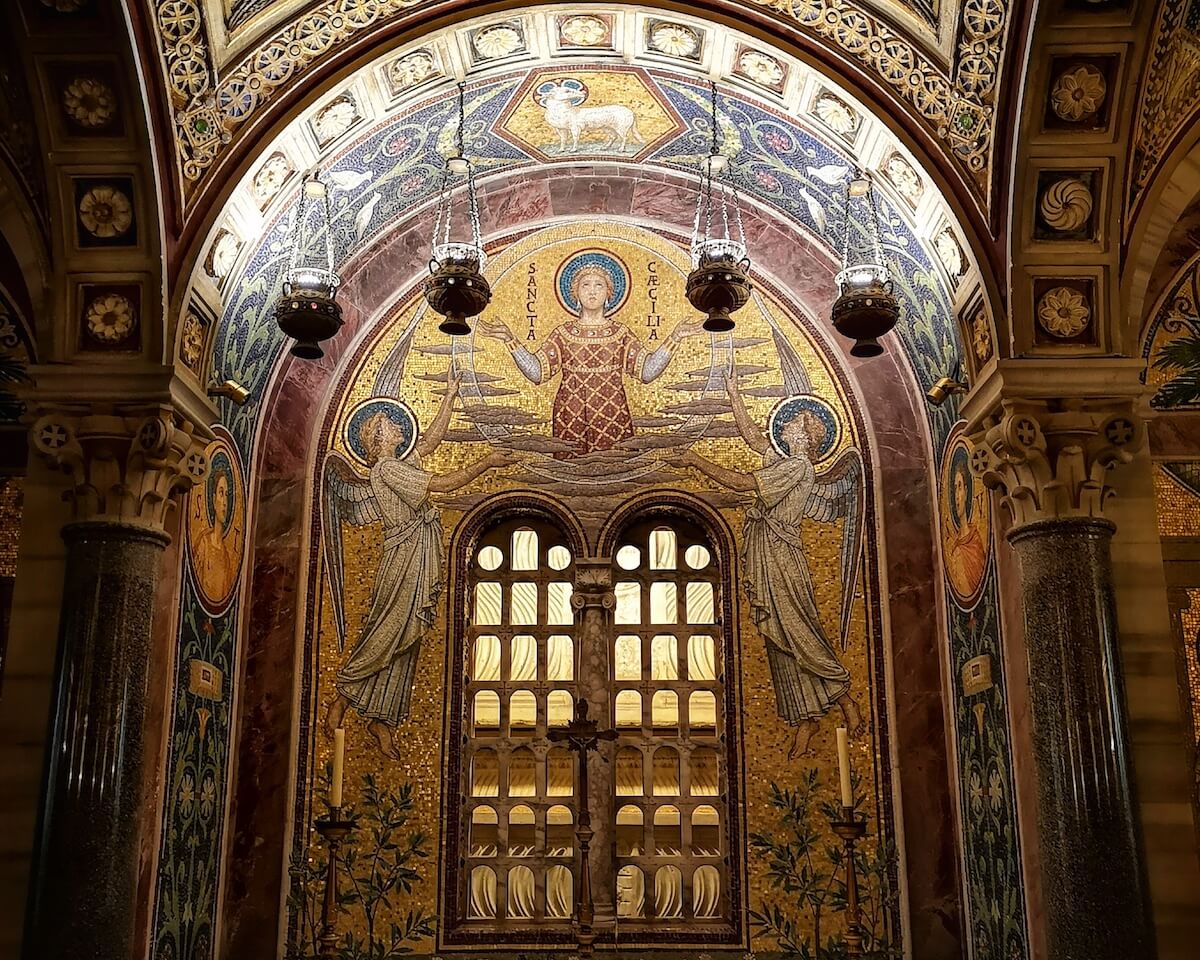
But it's the crypt itself that will really take your breath away. A stunning example of 19th-century neo-Cosmatesque ornamentation, the crypt features row after row of beautiful columns carrying stunning vaulted ceilings, every inch of which are decorated with fine mosaics, frescoes and stuccos.
The Catacombs of Domitilla
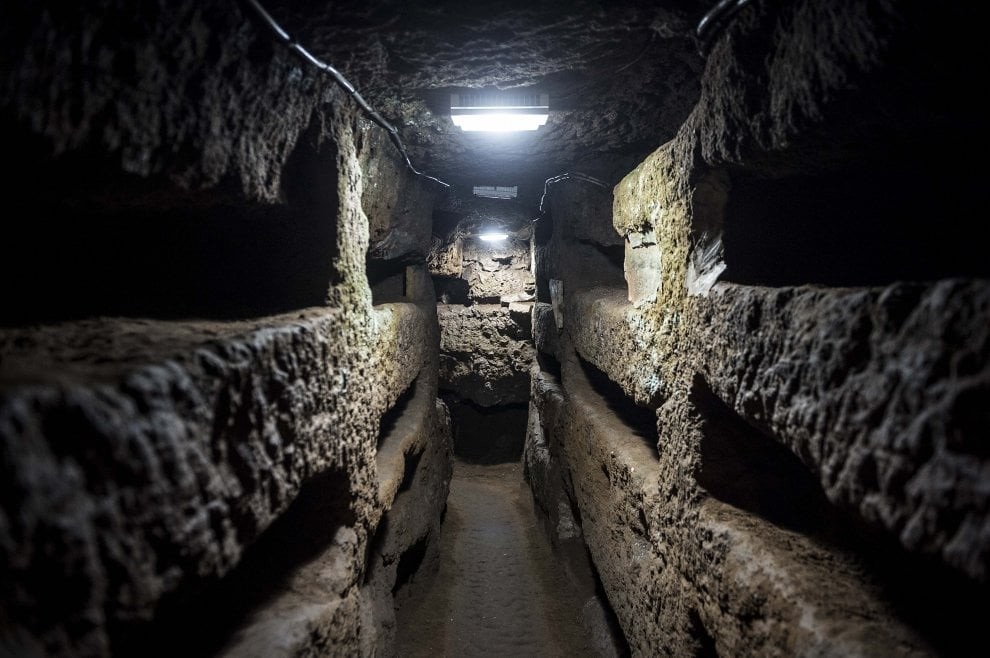
Hidden in plain sight beneath the countryside in Rome's southern outskirts, the remarkably well-preserved catacombs of Domitilla provide a fascinating window into the distant world of antiquity: carved out of the soft tufa rock, layer upon layer of labyrinthine tunnels stacked from floor to ceiling with narrow niches contain an inexhaustible supply of ancient Christian bones, macabre reminders of Rome's role as cradle of Christianity in the Imperial Roman world.
Small rooms or cubicles open out from the maze to reveal the final remaining places of families rich enough to enjoy the peace of private sepulchres. Strange symbols are engraved into their tombs – fish and anchors, secret signs that symbolized the presence of Jesus Christ, messiah and savior of the Christian faith. Simple frescoes meanwhile adorn the walls with depictions of prominent Christians and symbolically charged motifs.

Christian belief in the resurrection of the body meant that adherents had to be buried whole to await their final call to heaven. As Christianity grew in popularity and pagan persecutions intensified, the bodies multiplied and there was a desperate need for more burial space. And so the ancients dug down. Romans from all walks of life were laid to stay here from as early as the 2nd century AD, when Roman noblewoman and Christian convert Flavia Domitilla donated land to the church so Christians could be buried in peace, far from prying and persecuting pagan eyes. It's one of the oldest Christian cemeteries in the world, and a must-visit underground site in Rome.
The Roman Temples of San Nicola in Carcere
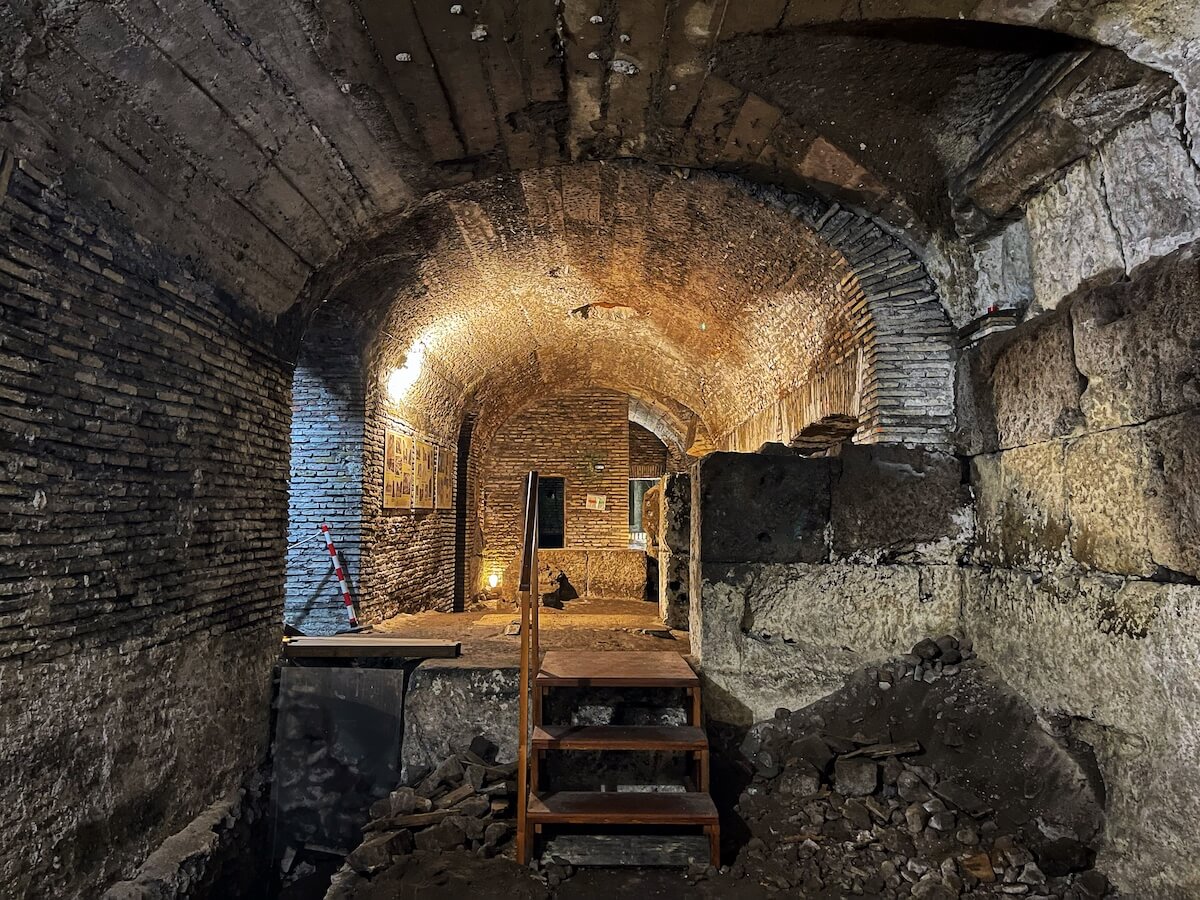
One of the city's most fascinating archaeological palimpsests is to be found in the church of San Nicola in Carcere, an 11th-century edifice built right into the remains of an ancient Roman temple. In antiquity this was the site of the Forum Holitorium, a vibrant vegetable market that was also home to a series of Republican-era temples.

Whilst the columns of one of the temples are set right into the side of the medieval church, more archaeological splendor awaits below ground, where the atmospheric remains of the remaining temples are concealed beneath San Nicola. An erroneous belief arose in the Middle Ages that the subterranean remains were repurposed as prison cells, giving the church its name (carcere means prison in Italian).
The Underground of San Crisogono
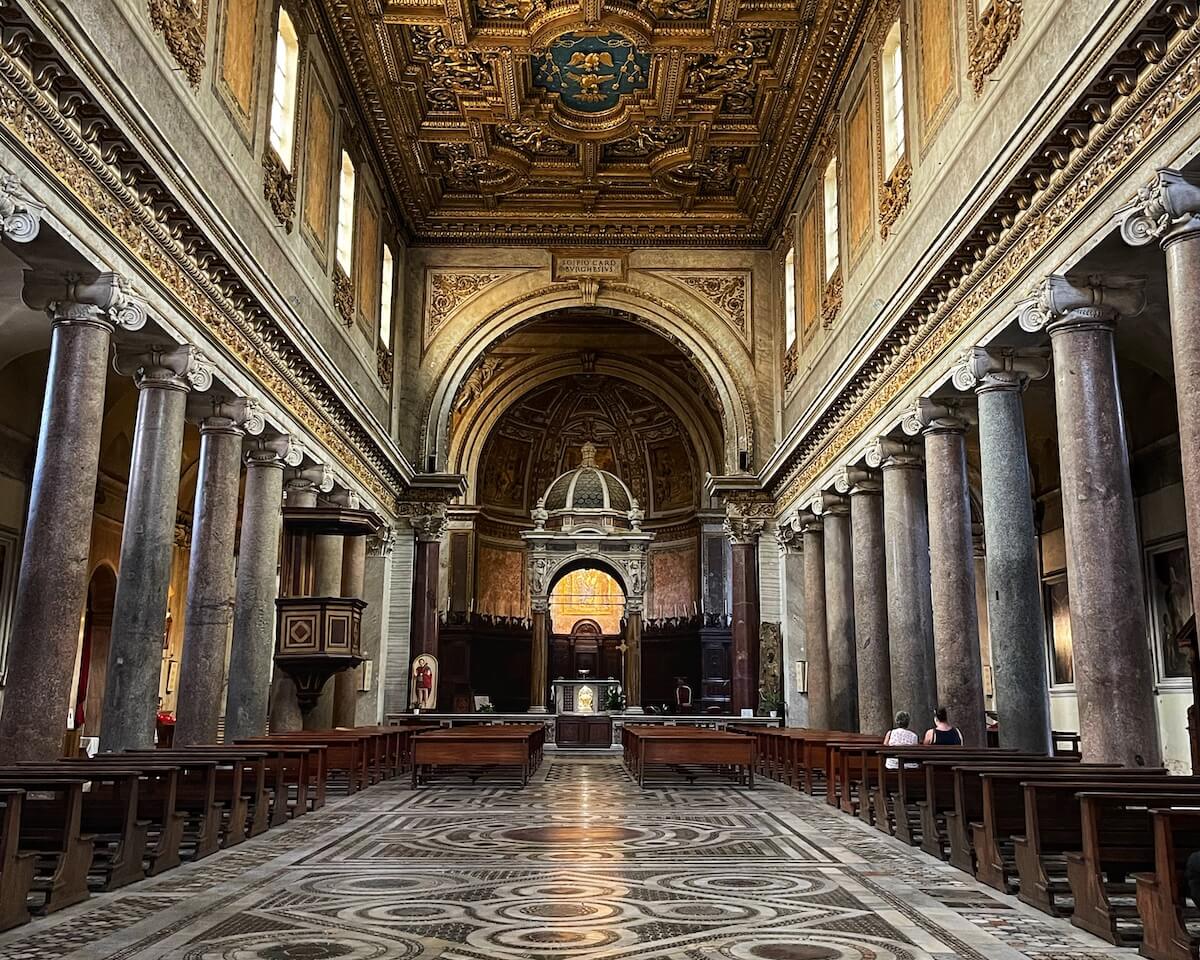
Lost-to-time San Crisogono was first built in the 1120s, before being renovated in the 17th century on the command of all powerful Cardinal Scipione Borghese - but the church retains many of its beautiful medieval fittings, including a beautiful 13th-century mosaic by proto-Renaissance master Pietro Cavallini, stunningly framed by a curvaceous Baroque canopy over the high altar.
From the sacristy, you can descend into the remains of the early-Christian basilica. Steps lead down to the apse of the original titulus Chrysogoni - a simple, single-naved house of worship erected in the 5th century over the remains of an ancient Imperial-era Roman structure. You can still make out the shape of the ancient church, and fragments of sculptural decoration litter the space.
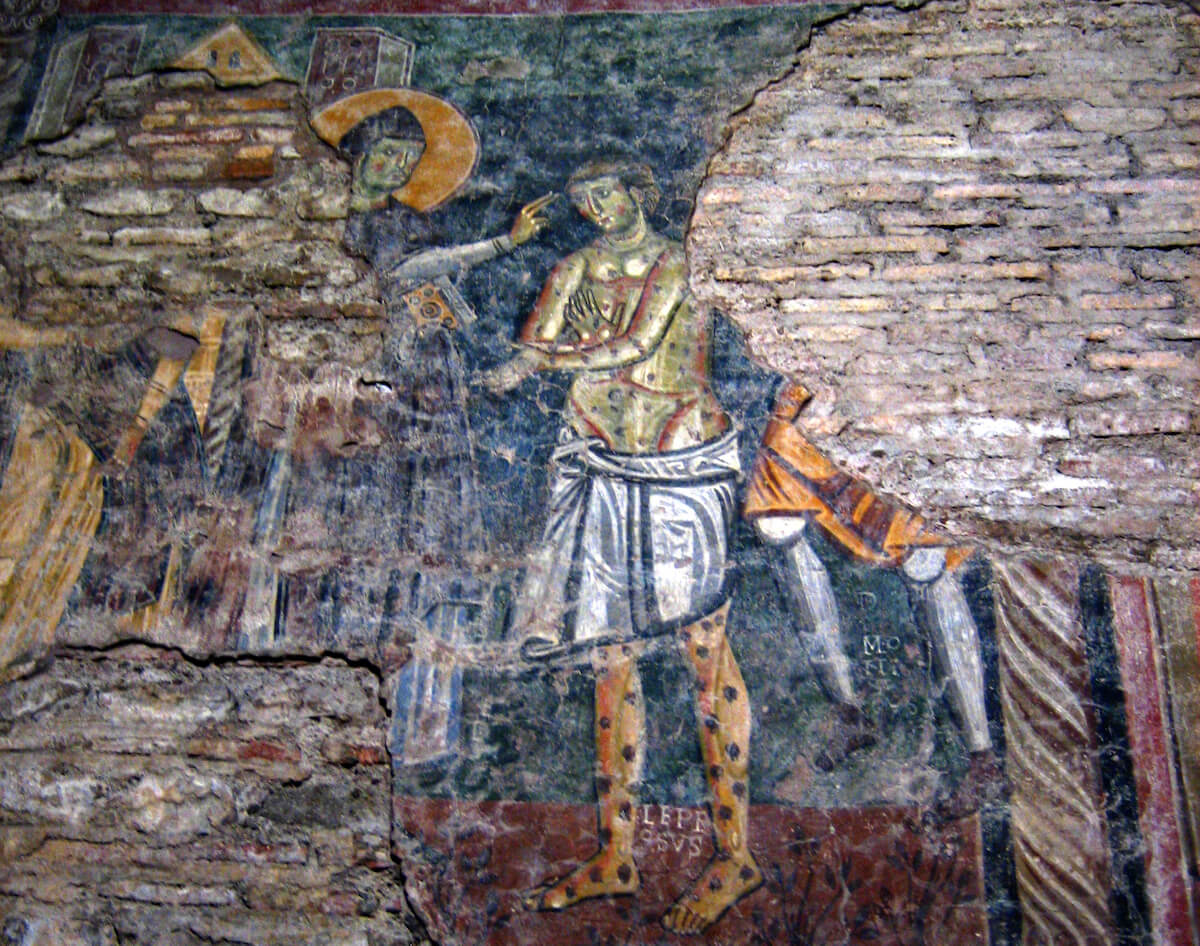 Photo courtesy Wikimedia commons, author Antony M, CC BY 2.0 license
Photo courtesy Wikimedia commons, author Antony M, CC BY 2.0 license
Best of all are the remains of 11th-century frescoes still visible on the crumbling walls - scenes from the lives of Saint Benedict and Silvester offer a vivid insight into medieval Roman spirituality. Intriguingly, the almost entirely-effaced remains of even earlier murals depicting mysterious gigantic figures can still just about be made out below. Amongst other highlights down here, look out for an early-Christian baptismal font as well as a late Roman sculpted sarcophagus.
The Ancient Titulus of San Martino ai Monti
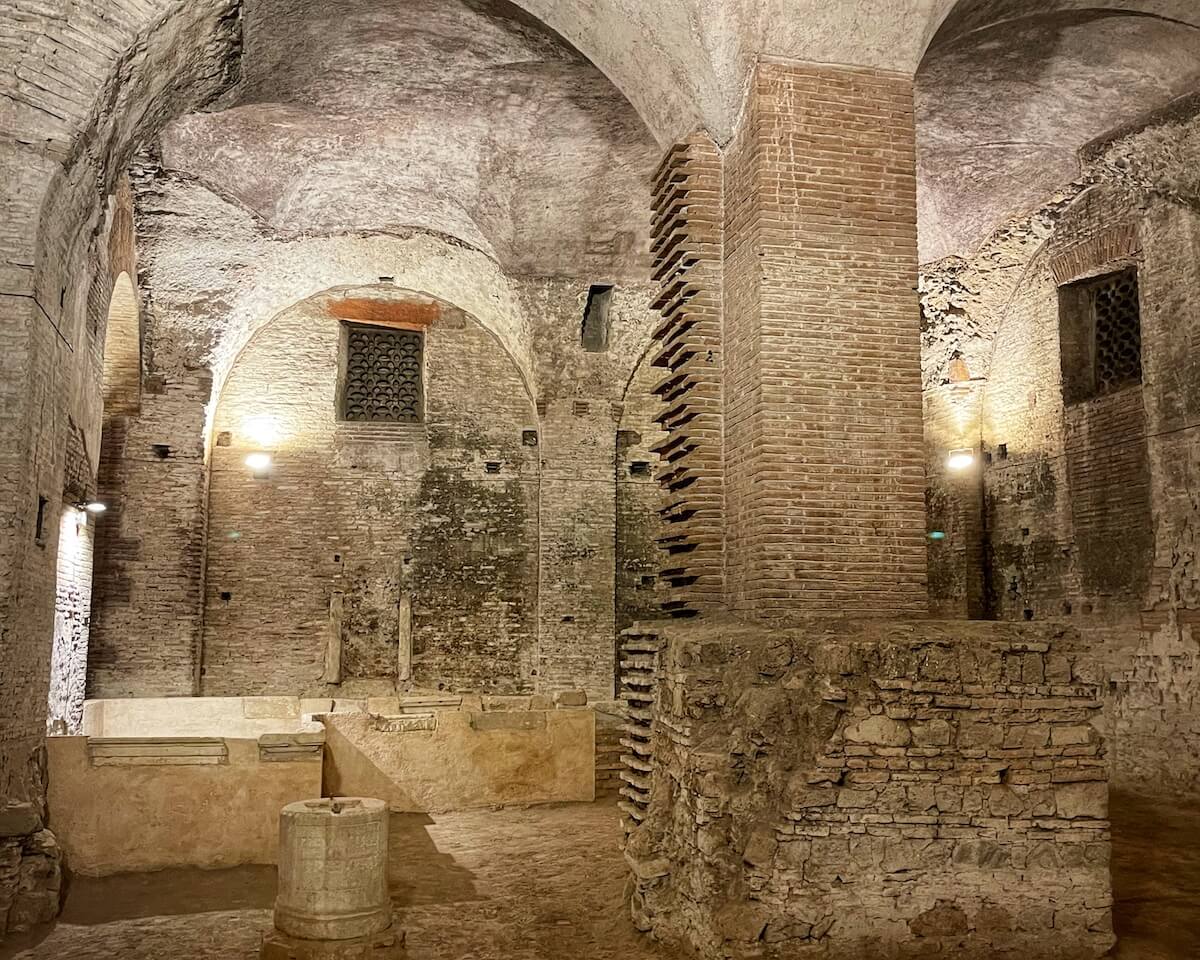
One of Rome's least-visited but most fascinating underground sites, the hugely atmospheric ancient remains beneath the church of San Martino ai Monti are datable to the third century AD, and probably form part of the original titulus Equitii - an informal house of worship founded by Pope Sylvester on a site donated by a Roman named Equitius. A century or two later saw Pope Symmachus building a larger church over the titulus , and although much rebuilt over the centuries the structure is more or less the same today.
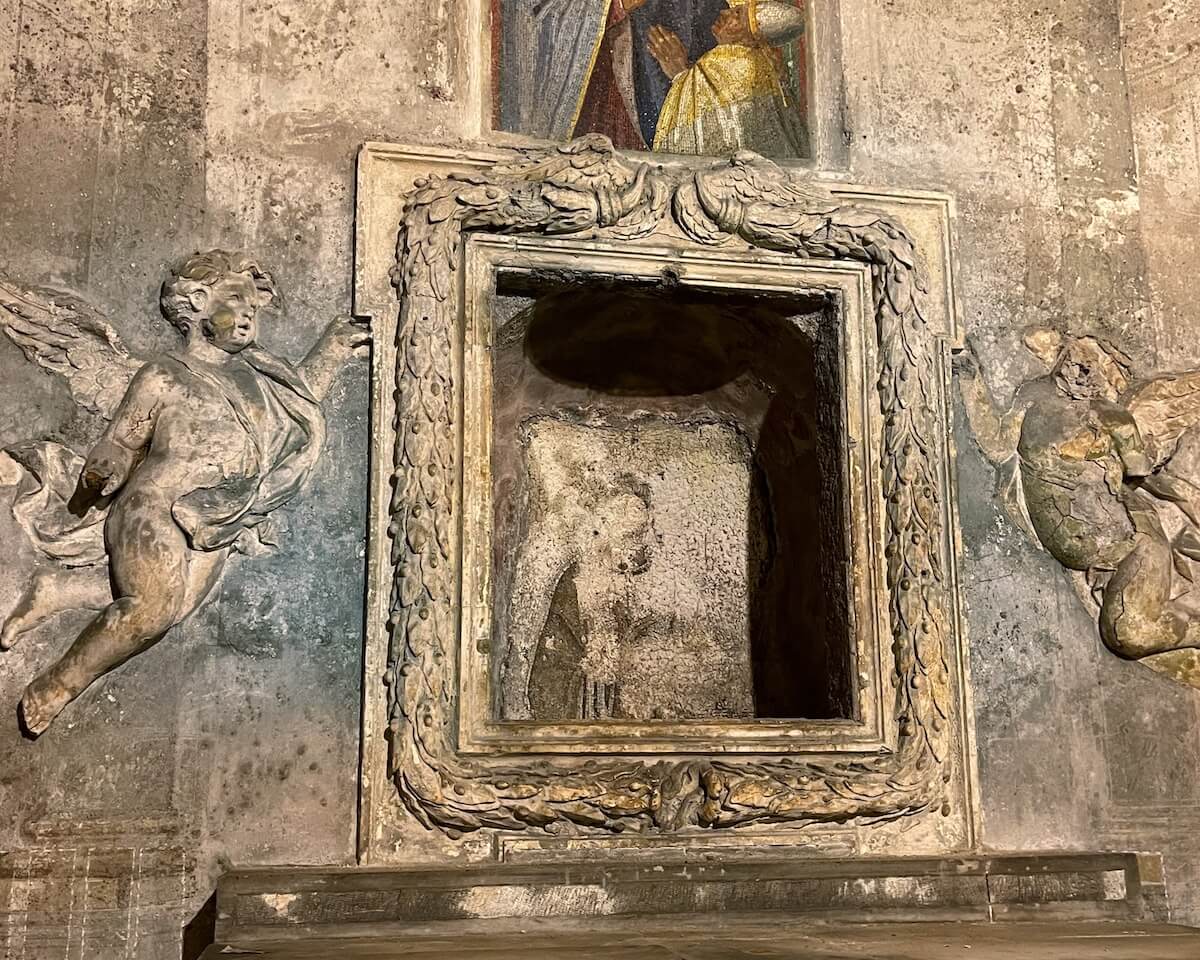
To access the spaces associated with the older oratory, head down into the interesting Baroque crypt designed by Gagliardi; a ramp and further stairs lead ever downward, and you'll eventually emerge into an airy hall covered with a vaulted ceiling where various ancient architectonic fragments are still visible. A small chapel dedicated to Saint Sylvester was created by Pope Symmachus down here during his 6th century building campaign; there a ghostly fresco of the two popes provides a tantalizing glimpse of the distant lost world of early Christian Rome.
If you'd like to visit some of the fascinating subterranean sites featured in this guide, then join Through Eternity's award-winning Underground Rome guided tour to visit buried churches, catacombs, crypts and more!

